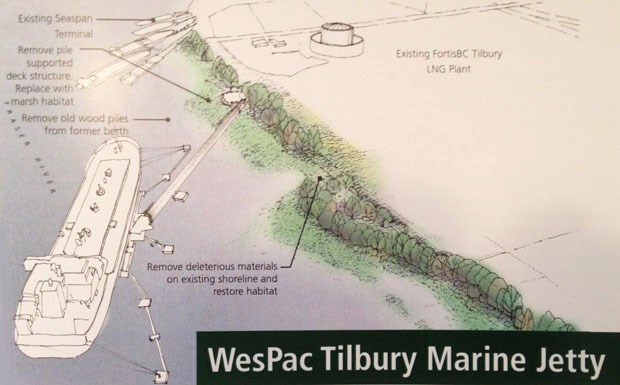The review of a proposed LNG facility in Delta has been put on hold.
Earlier this year, the B.C. Environmental Assessment Office announced it formally accepted the application from WesPac Midstream to build a marine jetty north of the existing FortisBC LNG plant at Tilbury Island.
It kicked off a 180-day application review process.
The marine jetty on the Fraser River would be used for loading LNG from the FortisBC plant to supply local and offshore markets three million metric tonnes per year over 25 years.
The project is subject to review under the B.C. Environmental Assessment Act and the Canadian Environmental Assessment Act.
The Ministry of Environment and Climate Change Strategy told the Optimist the initial scope of the project considered potential impacts from the jetty at Tilbury Island to the mouth of the Fraser River. Last month, the federal minister of environment and climate change issued a decision to expand the scope of the project to include marine shipping extended to the 12 nautical-mile limit of Canada’s territorial sea.
Earlier this month, at the request of WesPac, the Environmental Assessment Office paused the 180-day application review to allow additional time for the company to consider potential project-related effects with respect to the expanded scope.
The 180-day timeline will resume once WesPac has provided the supplemental analysis for the expanded scope area and once the EAO is satisfied with the information provided.
A civic report to Delta council this year noted an environmental assessment concluded there would be no significant effects once the proposed mitigation measures are implemented.
“This is due in large part to the location of the project in an industrial setting that makes use of an existing LNG facility and a previously disturbed site, along with use of established shipping routes. It is also noted that the risks of accidents and malfunctions is low and a number of precautionary measures will be implemented as part of the project including the use of three escort tugs tethered to each LNG carrier while they are transiting the Fraser River,” the report explains.
Construction of the project, before the review scope was recently expanded, was anticipated to have begun this year and taken 36 months.



